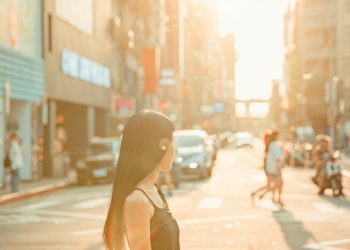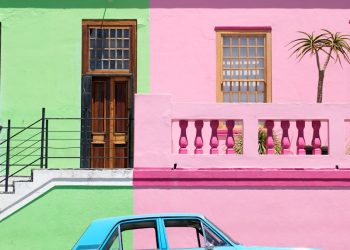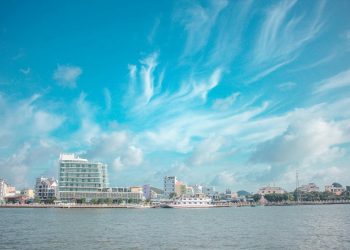Throughout history, art has been more than just an expression of beauty or skill — it has been a force for social change, a mirror reflecting society’s struggles, and a call to action for generations. Some artists transcend their mediums to leave a profound impact on the world, shifting cultural, political, and even moral landscapes. Their contributions ripple through time, inspiring not just their contemporaries but countless generations that follow. Here, we explore five such artists whose visions and courage fundamentally altered the world.
Pablo Picasso: Painting the Politics of Pain
It’s difficult to imagine modern art without the disruptive genius of Pablo Picasso. Born in Spain in 1881, Picasso’s influence spans Cubism, Surrealism, and a myriad of experimental styles. However, it was his politically charged work that cemented his place as an artist who did more than redefine aesthetics — he challenged humanity’s conscience.
Picasso’s masterpiece, Guernica (1937), painted in response to the Nazi bombing of the Basque town during the Spanish Civil War, stands as one of the most haunting anti-war images ever created. The monochromatic chaos of the painting — its screaming figures, fragmented bodies, and sense of overwhelming despair — captured the horrors of war more viscerally than any news report. Displayed at international exhibitions, Guernica became a universal symbol of protest against oppression and violence. Picasso showed that art could be weaponized not to harm but to awaken the collective spirit, forcing viewers to reckon with humanity’s darkest instincts.
Nina Simone: A Voice for the Voiceless
When discussing artists who changed the world, it would be remiss not to mention Nina Simone. Often called the “High Priestess of Soul,” Simone was far more than a singer-songwriter. She was a classically trained pianist, an uncompromising advocate for civil rights, and a deeply emotional storyteller.
In the 1960s, Simone’s music became inseparable from the Civil Rights Movement in the United States. Songs like Mississippi Goddam and To Be Young, Gifted and Black were not mere entertainment; they were cries for justice, rallying anthems for a generation demanding equality. Simone used her voice to spotlight the brutal realities of racism, often at the expense of her commercial success. She faced boycotts, surveillance, and isolation, yet she refused to be silenced.
Through her art, Simone taught the world that music could be a battleground for dignity and freedom, that every note could carry the weight of generations longing to be heard.
Frida Kahlo: Rewriting Identity and Pain
Frida Kahlo’s paintings are instantly recognizable: the vivid colors, the symbolic imagery, the unflinching honesty. But Kahlo’s true revolution was not just stylistic; it was deeply personal and profoundly political.
Suffering from lifelong health issues due to a devastating bus accident and battling emotional turmoil, Kahlo painted her pain without sanitization. Yet her self-portraits were more than explorations of personal anguish. They challenged patriarchal norms, celebrated indigenous Mexican culture, and redefined beauty standards. Kahlo’s open exploration of gender, sexuality, disability, and nationalism was ahead of her time, making her an icon for various movements, from feminism to LGBTQ+ rights.
Frida Kahlo didn’t just change the art world; she expanded the very boundaries of identity, showing millions that their scars could be their strength.
Ai Weiwei: Art as Dissent
Chinese contemporary artist and activist Ai Weiwei exemplifies the power of art as resistance. Growing up under an oppressive regime that censored free speech and creative expression, Ai learned early that art was political whether or not one intended it to be.
Ai’s work often merges traditional Chinese art forms with biting critiques of government corruption, human rights abuses, and censorship. His installation Sunflower Seeds at the Tate Modern — consisting of 100 million porcelain seeds handmade by artisans — spoke to the tension between individualism and mass production, between state propaganda and personal freedom. After openly criticizing the Chinese government’s handling of the 2008 Sichuan earthquake, Ai was arrested and detained, and his studio was demolished.
Yet Ai refuses to be silenced. He continues to use social media, sculpture, photography, and architecture as weapons of dissent, reminding the world that the fight for freedom is universal — and ongoing.
Banksy: The Anarchist Artist
Perhaps no contemporary artist captures the spirit of rebellion like the elusive Banksy. Emerging from the British street art scene in the 1990s, Banksy transformed vandalism into a global conversation. His stenciled works, often appearing overnight in urban spaces, mix biting humor with razor-sharp social commentary.
From mocking capitalism and war to highlighting the plight of refugees, Banksy’s art forces passersby to pause and think. Works like Girl with Balloon and There Is Always Hope combine simplicity with profound emotional resonance. But Banksy’s impact goes beyond clever images. He challenged traditional notions of ownership, value, and what art could — and should — be. His 2018 stunt, where a version of Girl with Balloon self-shredded after being auctioned for over a million pounds, was a striking critique of the commodification of creativity.
By bringing urgent political and social issues to public spaces, Banksy democratized art, turning every wall and alleyway into a platform for protest.
Art Beyond the Canvas
Each of these artists — Picasso, Simone, Kahlo, Ai, and Banksy — wielded creativity not merely to entertain but to incite, to challenge, to heal, and to transform. They used brushes, voices, porcelain, and spray paint to confront the world’s ugliest truths and inspire the pursuit of a better future. Their impact reminds us that art is not passive decoration; it is an active participant in history.
In a world still grappling with inequality, violence, and injustice, the work of these visionaries feels more urgent than ever. They showed us that art has the power to cross borders, bridge divides, and ignite revolutions — not only in society but within the hearts of individuals.
Ultimately, they teach us one enduring lesson: when wielded with courage and conviction, creativity doesn’t just reflect the world. It reimagines it.











